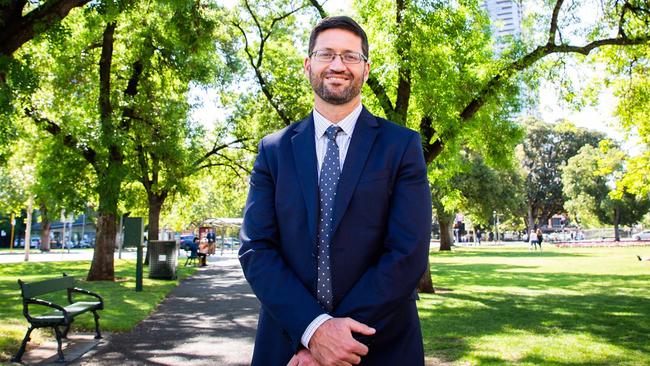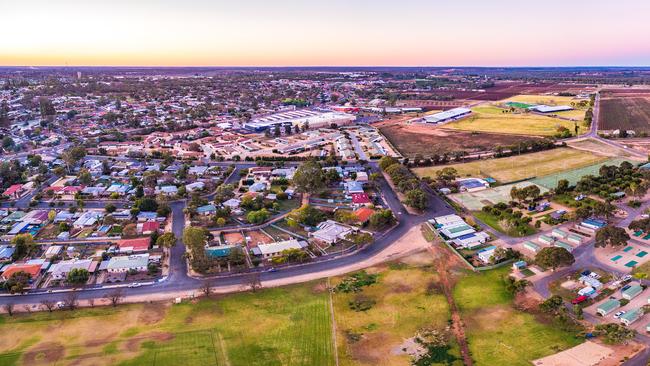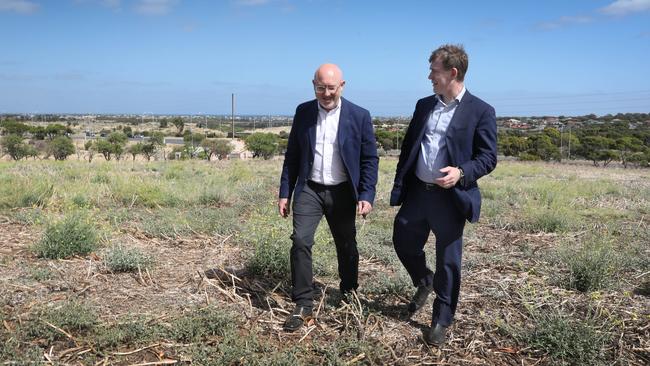SA Government investing in new measures to ease housing crisis
The State Government is unlocking doors to home ownership and investing in more public and regional housing
SA News
Don't miss out on the headlines from SA News. Followed categories will be added to My News.
Recent changes to lending products are unlocking the doors to home ownership for thousands of South Australians.
HomeStart Finance has revised and expanded the availability of a number of its loans to reduce upfront costs and increase borrowing power for prospective homebuyers.
The low-deposit lender – a South Australian government organisation – has been helping to make home ownership a reality for South Australians for more than 30 years, providing loans to people unable to obtain finance from traditional lenders.
“We’ve helped more than 80,000 South Australians buy a home – around one in six first homebuyers in South Australia have used HomeStart to get into home ownership,” HomeStart CEO Andrew Mills says. “We use a variety of innovative home loans designed to help people overcome barriers to home ownership, including buying power, upfront costs like taxes, stamp duty and fees, and just coming up with a deposit.”

HomeStart’s Starter Loan offers borrowers access to interest-free loans up to $10,000, repayment free for at least seven years. “That money is designed to help people cover those upfront costs,” Mills says. “We’ve increased the income eligibility criteria for the Starter Loan from $65,000 to $75,000 for single income people and from $90,000 to $100,000 for couples or dual income homebuyers.”
An increase to HomeStart’s Advantage Loan from $50,000 to $70,000 aims to increase customers’ buying power without increasing their monthly repayments. “The biggest benefit for the Advantage Loan change is for households earning less than $40,000 per annum,” Mills says. “It’s really targeted at those people who would be feeling a fair bit of financial pressure at the moment.”
For people living in the regions, lowered deposit requirements and greater access to HomeStart’s Graduate Loan will offer more opportunities for home ownership. “People who are eligible for our Graduate Loan can now buy with a deposit from as low as 2 per cent,” Mills says. “For those not eligible, the deposit is 5 per cent – previously it might have been 10, 15 or even 20 per cent. That’s a significant shift.”
HomeStart is also working with the State Government on introducing a 3 per cent Low Deposit Loan for first homebuyers purchasing a newly constructed home or building a new home.
Investing in South Australia’s public housing

A strong South Australian property market where median prices soared by almost 40 per cent in just three years has created unprecedented demand for properties and driven a need for more public housing.
In the December 2022 quarter, the state’s median house price reached $595,000, an increase of 36.8 per cent on the December 2019 quarter. For metropolitan Adelaide, the median house price reached $670,000 in the December 2022 quarter, an increase of 38.1 per cent. According to CoreLogic’s Home Value Index, Adelaide property prices even outstripped Perth in July 2020, creating more challenges for those looking to buy a home.
Andrea Heading, Real Estate Institute of South Australia (REISA) CEO, says that, while South Australia has recorded a record median price, the volume of sales is dropping – likely due to the scarcity of available properties on the market.
“From speaking to agents in terms of weekly sales, auction clearance rates are high and interest from registered bidders is still really high so it’s a competitive market out there,” she says. “That compounds the issue of first homebuyers entering the market because what an entry level looks like to them compared to what an entry level looked like three years ago – it’s significantly different.”
To relieve the pressure on the housing market, the State Government has committed to investing an additional $232.7 million in public housing, which will deliver 564 new homes across South Australia.
“Building more public housing should be top priority,” Heading says. “For us, it’s relieving the pressure on the property industry that’s there at the moment, and so from our perspective it’s that whole thing around ‘Build it and they will come’. The need is there and people are waiting for them so we 100 per cent support this policy.”
The State Government has also committed to investing an extra $177.5 million in public housing, bringing the total new public housing delivered to 437 through its Public Housing Improvement program. A reversal of the SA Housing Authority’s intention to sell off 580 public housing properties will also be halted, while an additional $15 million per annum will go towards renewing and maintaining existing public housing properties, enabling an additional 127 houses to be built by June 30, 2026.
In addition to public housing, the State Government is looking to partner with the Commonwealth Government on priority housing projects to provide greater access to affordable housing, including a $70 million build-to-rent project at Park Court, on Greenhill Rd at Eastwood set to deliver more than 130 apartments, including between 30 and 50 social housing homes.
Unlocking potential of SA’s regions

A new regional housing office and a key worker housing scheme have been launched as part of the State Government’s drive to resolve the housing crisis across South Australia.
The Office for Regional Housing, created within Renewal SA, will focus on identifying, prioritising and addressing the unique housing challenges and opportunities in the regions.
These challenges include an extreme shortage of properties, particularly for rental accommodation.
“The supply of new rental housing has been very low for a long time, because in many instances it’s simply not financially viable for investors to build new stock,” Office for Regional Housing director Matthew Hunt says. “Development costs are often greater than the market value due to high construction material and transport costs, limited regional construction capacity and the small scale of developments.
“Rental accommodation in regional areas is often limited to older housing in poor condition. In addition, much of the housing that may have been used for long-term rental accommodation in the past is now being used for short-term rentals.”
The Office for Regional Housing aims to unlock economic growth in regional South Australia by facilitating the development of new housing stock, supporting key partners to plan and implement new housing projects, and encouraging and attracting private sector investment. A new Regional Key Worker Housing scheme has been rolled out to help achieve these aims, with a pilot program set to deliver approximately 30 homes across the Copper Coast, Riverland, Mount Gambier, Port Augusta and Ceduna.
“The Regional Key Worker Housing scheme will see the development of new housing for government service workers including nurses, teachers and police, supported by long-term leasing arrangements,” Hunt says. “In a similar model to Defence housing, homes may then be sold to private investors with the long-term leases attached.”
If successful, the intention is to expand the scheme to include more regions and other sectors, including the private sector.
The Office for Regional Housing will also provide a “one-stop shop” for regional councils, peak bodies, employers and stakeholders to access state government information, advice, assistance and support for housing initiatives. “The office will work with these partners to identify and prioritise housing challenges and opportunities and help to unlock supply constraints through co-ordination of state and federal government activity and investment,” Hunt says.
To deliver on the State Government’s regional housing initiatives, Renewal SA has begun a recruitment blitz to rapidly upscale its operations across the Office for Regional Housing, affordable housing and future land supply more broadly. “Some of these jobs will play a direct role in easing housing supply issues and unlocking economic growth potential in regional South Australia,” Hunt says.
Log on to renewalsa.sa.gov.au/about-renewal-sa/careers for more information.
Development sector to play its part
Unlike a natural disaster, a housing crisis doesn’t just happen overnight nor are they easy to fix, but thankfully we are now seeing some concrete action to address it.
The fact is, a housing crisis can only be addressed by building more houses. This in turn requires more development sites which all take time. Of course, any potential response also leads to a whole range of opinions being expressed and switchboards are lit up with “not too high”, “Adelaide is getting too big” – and the list goes on.
It’s easy to see how this scenario leads to inaction, while in the meantime the family looking for a place to rent faces the danger of living in a car, or young couples can’t start a family because they still have to live with their parents.
This is why planning for growth to protect our liveability has been a key advocacy issue for the Urban Development Institute of Australia and we made a series of recommendations in the lead-up to the state election.

It’s a discussion about development, but not in isolation to broader community expectations. It’s pleasing to see a number of these now being adopted. We have long said the focus needs to shift to “good” development, not just championing a “type” of development.
We need a balanced mix of large strategic infill sites, new greenfield areas, and appropriate general infill development. It should be based on evidentiary data and not just what can be put on a single allotment, but also on the make-up of all requisite infrastructure in new and existing suburbs.
This is what we’ve told the Expert Panel who are reviewing the planning system implementation, and by all counts they have heard this loud and clear.
The recent announcement of the intention to rezone some big parcels of land is a critically important first step to get our market back in balance.
There are however a couple of other welcome announcements which are no less important that we’ve fought for and believe can make a material impact.
The first relates to things that can be done to avoid getting to a crisis point. We need better ways to see price and supply pressures coming, which in turn enables quicker policy and investment responses.
It is what we refer to as the “development ready pipeline” of supply. It’s complicated but in essence it’s the use of up-to-date and real time data of all of the inputs and constraints to development, particularly around major trunk infrastructure to get developments to market.
Pleasingly, the government announced a new Land Supply Dashboard and working with them we hope it will do exactly that.

It should span multiple agencies and levels of government and tell a story of where the critical bottlenecks exist.
So how exactly does a new dashboard of data help the housing crisis? A fundamental tenet of housing markets in Australia is that we rely on the private sector.
It’s the private sector that responds to market demand by reducing or increasing supply to meet that need – but the housing market can’t just respond like any other market, it is regulated. Governments are responsible for approving new developments and base decisions on whether they think there’s adequate supply.
This means if they get it wrong at a macro level the consequences are enormous.
This is where the new data can play a part. Another factor is that in recent times we’ve had a regulatory regime that did not adequately consider the time required for the market to respond. A large-scale development can take 10 years – it’s not the same as just ordering something from Amazon!
It’s why we have been suggesting you should not just think about land supply in an exact sense but create an environment where a multitude of different developers in a competitive environment have product available, creating much more latent supply.
That’s how you will create downward pressure on prices. There is of course the massive challenge related to infrastructure in delivering good quality and sustainable developments that South Australians would rightly expect.
In addition to the decision to invest infrastructure, there is also the enormous amounts of co-ordination and the planning that go with it.
Large-scale developments require careful consideration of so much interconnected infrastructure from multiple agencies. That’s why the creation of a Infrastructure Planning and Development Unit is another significant announcement.
It is positive recognition by the government that they have a critical role to play in the co-ordinated and efficient delivery of infrastructure which has been sadly lacking.
It means more houses being delivered in a shorter timeframe.
With the urban development sector representing $7.8 billion in gross value added to the economy, even small improvements could represent significant improvements to the South Australian economy and housing affordability.
It’s something that the UDIA championed for in the “grow.reform.build” advocacy agenda and we will now be working closely with the government to maximise its impact.
There is no doubt that a constrained housing market makes life tough for so many – particularly for those least well off – but the Government needs to be commended for these important first steps.
They have taken steps to address the housing crisis and the development sector now stands ready to play our part.
- By Pat Gerace, Urban Development of Australia (SA) chief executive officer



